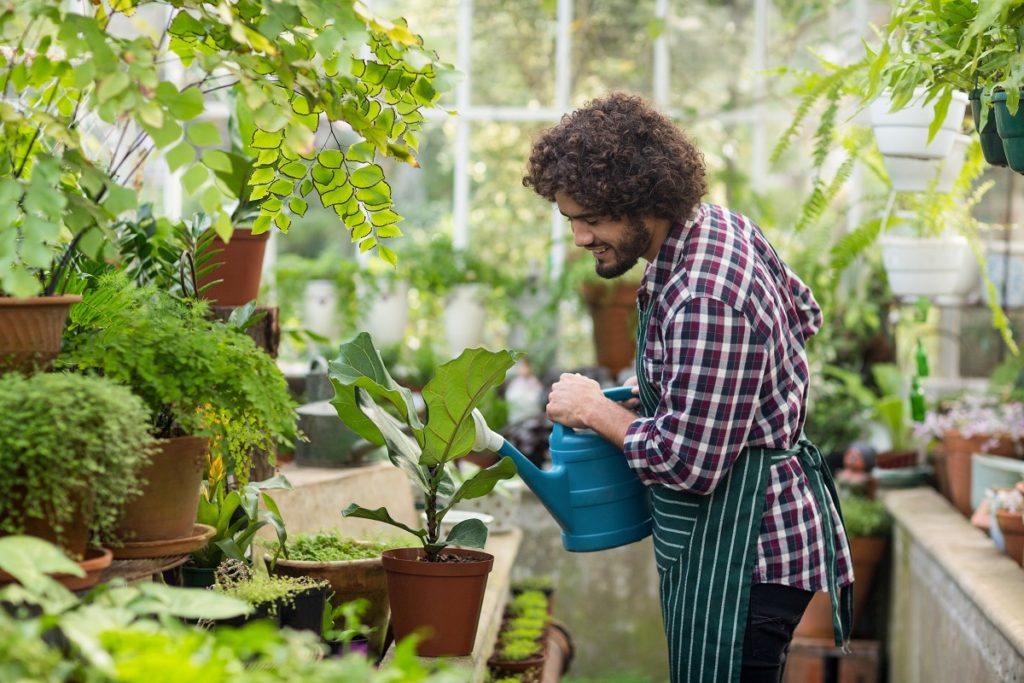Gardening can be an excellent recreational activity. Many homeowners enjoy this remodeling project as it can reduce stress and anxiety. Studies also show that this activity can help stir up your creative juices making you more productive at work. Keep in mind however that this requires several tasks to keep your garden green and healthy. Even some enthusiasts and lawn experts experienced some difficulties maintaining their garden.
Feel free to use the following guidelines below when starting a lush green garden or working on a landscape project.
1. Examine the Plants Carefully
Before transplanting anything to your lawn or garden, make sure the seedlings are healthy. If you notice any unhealthy sighs such as discoloration of the leaves and stem or rotten roots, separate them from other plants, and provide treatment. Some plant diseases such as fungus, mosaic virus, spider mites, and rhizoctonia can easily spread out.
For bacterial spots and blight, remove the infected plants or cut down the leaves and stem, then apply fungicide. Avoid putting any fertilizer or booster until the plants are completely healed.
2. Mulch your Garden
Mulching is essential to the overall growth rate of your plants and crops. This serves as a soil filtration and protects your garden from extreme weather conditions. It can also help proper water absorption for better soil compaction, and keep the roots moist and healthy.
Choose organic mulch from providers like millcreekgradens.com in Salt Lake City. Some of the best materials you can use for include wood chips, nuggets, bark, straw, grass clippings or shredded leaves, and crusher dust. Others also recommend composted nutrient-rich animal manure and cocoa chips.
3. Watch out for Pest Infestation
 Having a pest control strategy beforehand is advisable when growing a garden. Don’t wait for these bugs to overgrow your plants and crops. Find the best way to eliminate and prevent pest infestation as soon as possible.
Having a pest control strategy beforehand is advisable when growing a garden. Don’t wait for these bugs to overgrow your plants and crops. Find the best way to eliminate and prevent pest infestation as soon as possible.
Double check your routine, and make necessary adjustments. For example, you may need to raise humidity to get rid of red spider mites. If you’re growing a garden within a greenhouse, adjust the electrical conductive levels or use an evaporative cooling pad to control humidity. If there are no improvements, look for organic sprays.
Take the necessary precautions when using pesticides. There are brands containing stronger chemical solution which can affect the overall health and condition of your plants. Try looking for all-natural homemade herbicides to be safe.
4. Prune Damaged Stems and Roots
Pruning is another step you should not overlook, especially during winter or cold seasons. This is essential to the overall condition and proper growth of your shrubs and trees. It can help prevent a disease from spreading and fungi overgrowth.
Use the right set of tools to make clean cuts for better plant recovery. Avoid cutting healthy living tissues, as well. While doing this, you can also look for signs of fertilizer residue or salt buildups. This can be an indication that you’re over-fertilizing your plants. Water the plants right away to flush out the soil.
Following these guidelines should help you grow a healthy garden. Do more research for more information. Gardening is a learning process. Consult a professional if you’re uncertain about your routine.

